The secret to collecting insightful customer feedback comes down to asking the right questions and deciding when a closed list of answers won’t suffice.
After all, if you ask “What is our weakest link?” and a client selects an option that says “customer service,” it won’t exactly tell you how you can improve, will it? Here’s where open-ended questions come to your business’ rescue, allowing your respondents to tell you what they think in their own words.
In today’s article, we’re going to
- explain what open-ended questions are
- share some open-ended question examples
- give you a few tips on how to run open-ended questions effectively
We’ll also discuss how you can use them together with closed-ended questions to derive the most insights.
Let’s dive right in!
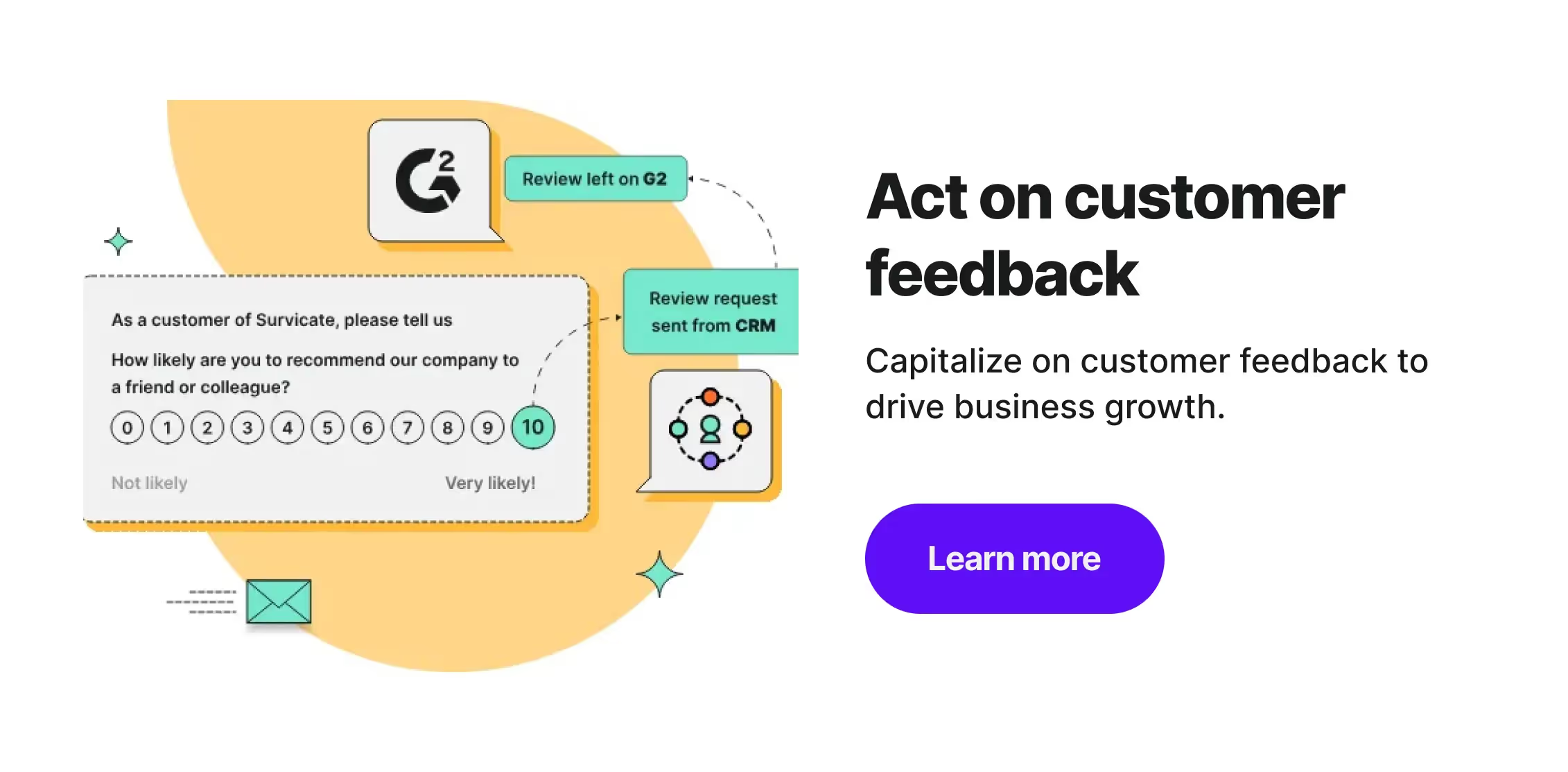
What Are Open-Ended Questions?
Open-ended questions let your respondents provide their own, text-based responses instead of making them choose from a closed list of answers.
These types of questions are especially beneficial in two situations:
- when you’re looking to collect qualitative feedback (i.e., one that displays your respondents’ opinions), or
- when you’re unsure what kinds of answers people could come up with (i.e., you don’t want to limit their options).
Open-ended questions also make a great supplements to closed questions, which we discuss below. Check out this example of a survey that combines the power of open-ended and close-ended questions:
What Are Closed-Ended Questions?
Closed-ended questions are the survey question type where you give your respondents the choice to select from a list of options.
They should be your go-to method when you want to get a simple overview of your customers’ impressions on a scale, or when you’re 100% sure what answers people can possibly come up with.
That’s all for theory – let’s now take a look at some open-ended question examples as well as closed-ended question examples.
Three Examples of Open-Ended Questions vs. Closed-Ended Questions
While their names are self-explanatory, let’s look into some examples to understand the differences between these two types of survey questions.
Also, it’s important to remember that you usually use them together to supplement each other. They serve different purposes but need to be paired up for the complete picture of the topic you are surveying.
Open-Ended Questions Examples
"What’s stopping you from finalizing your purchase?"
"What is the one thing that matters to you the most in a product/service like ours?"
"Why did you decide to leave our website?" (exit intent question)
Open-ended questions need to dive deep into shortages that keep users from being happy when interacting with your cart, website, and customer service.
Bear in mind to avoid using leading questions when formulating them. Also, the open-ended questions should ask about one thing at a time.
For example, you don't want to ask, “Do you like non-gluten and dairy-free desserts?” in one question, as this might confuse respondents and make them drop your survey.
Open-ended questions demand people speak up and express their thoughts which is an effort of its own. Don't make it overcomplicated.
Closed-Ended Questions Examples
“On a scale from 1-10 how would you rate this feature?"
“What’s your preferred communication channel?” (email, chat, phone)
“On a scale from 1-10, how happy are you with how your issue was handled”?
As you can see, these are all straightforward and can be answered with just a single click.
It’s worth mentioning here that some of the most popular survey types are built around closed-ended questions. They include NPS, CSAT, and CES.
The first is a customer loyalty metric, which calculates the proportions between brand promoters and detractors, the second – measures customer satisfaction on a 1-5 scale. While the last metric calculates how easy it is for customers to complete a process (for example, placing an order).
You can find these and other customer experience metrics in our library of free survey templates.
Free Customer Satisfaction Score Survey Template
11 Open-Ended Questions to Ask Customers in Surveys
Open-ended questions are beneficial when asked right after a scale-based question, as they provide the context for any closed-ended responses. We took a quick look at the questions that Survicates’ users frequently ask, and here is what we got.
1. Is There Anything We Could Do to Make Your Experience a 10?
If you ran a Net Promoter Score survey, and you spotted that a few of your users gave you an eight or a 9, it’s a sign they clearly enjoy your product.
While some respondents never give a ‘10’ NPS rating, as a rule, it’s always worth double-checking and asking whether anything is keeping them from giving you the highest score.
After all, you can never have too many promoters, right?
2. Which area had the greatest impact on your grade in the previous question?
A few factors contribute to a good user experience, like customer service, sales support, product features, price, etc. Getting just one of them wrong might negatively impact your brand image and result in a lower NPS.
It’s good practice to identify your weak spots and address them as soon as possible before they become a churn reason.
3. What is the one thing that we could do to improve your experience?
You can treat this open question as an alternative to the one above. It’s worth asking it to find out what comes up often. If you notice that users mention customer support as the area you could improve, you should further investigate it. You can also ask supporting questions to dig a little deeper – maybe there is someone within your CS team who performs poorly and needs further training?
4. How would you describe your experience with us?
This open-ended question will help you find out if your customers enjoy their experience. And since they can get creative, maybe you’ll identify a new angle for a testimonial, who knows?
5. Why did you decide to shop with us?
People have different reasons for selecting brands or products. While some will base their decisions solely on price, others will focus on functionality, product quality, or sustainability. Whatever the reason, it’s good to know why customers choose you.
Check out this post-purchase survey template for inspiration:
6. What qualities do you look for in a product?
This open question is perfect if you’re curious about what drives people to buy products. And you are looking for ideas to develop your own to expand their value.
For example, let’s imagine you run an online clothing store and wonder what people expect from your basic cotton line.
You could, for instance, hear that people expect the tops to be true-to-size (for example, they buy size ‘6’ and expect it to be the same size as that for other brands), that they enjoy your local production, or that they like your white t-shirts because they’re not see-through, unlike other similar products on the market.
By knowing what they value the most, you can develop your brand in the right direction and exceed customer expectations every single time!
7. What is missing from feature X to serve you fully?
Similar to the open-ended question example above, this one lets you continuously improve your product—this time on a smaller scale.
Feature-centered open questions allow you to polish up parts of the product that your customers interact with most often. For this reason, you want to ask such a question to a specific audience that actively uses it.
8. What’s stopping you from finalizing your purchase?
A great example of how closed-ended questions and open-ended questions can be used effectively is how the design company Looka uses Survicate to collect feedback from leads.
They ask their prospects, “what’s stopping you from finalizing your purchase?” and provide them with a closed-ended list of answers, such as “not ready yet” or “too expensive.”
However, they also leave an “other” option, which allows the respondent to provide an open-ended answer and opens a discussion.
This way, the company can continuously expand its horizons and refine its offering. It also lets them improve the list of closed-ended answer options to reflect the most recurring issues or worries of tentative buyers.
9. What is the main benefit that you have received from X?
Arguably one of the most powerful open-ended questions out there, which lets you find out where you truly shine. Benefits are at the core of your company mission, and they define your USPs, so you should actively pursue answers to such questions.Here are a few reasons that make this question important:
- You can use the survey responses as testimonials (naturally, if you gain permission)
- You’ll learn where you outpace your competitors
- You’ll gain a continuous source of inspiration for which benefits to underline on your home page copy and marketing campaigns.
10. What type of person do you think would benefit most from our product?
This open-ended question will help you build and refine your marketing persona. You might even uncover that your assumptions about your Ideal Customer Profile were wrong altogether!
A while back, for instance, we spoke to Nick Galov of server company TechJury. He told us that before they ran a survey among their clients, they were certain that their service was used for business purposes. Little did they know, though, it turned out they were serving a B2C crowd of avid online gamers.
This is just one of the many surprises you could find out by asking your clients about who they are or which customer base they think you’d be perfect for.
11. What is the most important feature we should build next?
Last but not least, by asking questions about product development, you will collect ideas from your clients that will fuel your product roadmap.
It allows you to keep your mind open to all sorts of concepts – perhaps, you will be startled with what your clients might be interested in the most. In the end, there’s no way you could collect such insights with a closed-ended question.
Here's an example of a feature-scouting survey:
Why Ask Open-Ended Questions?
While it might be tempting to rely on closed-ended questions only as they’re faster to collect, categorize, and easier to analyze, there are several reasons why you should go the extra mile and ask your customers for text answers.These include:
- You are learning more about customer needs. Closed-ended questions don’t always point to reasons. For instance, if you ask “How do you like this product on a 1-5 scale?” and get a “1” response, you won’t know where you’ve failed so miserably. However, if you supplement it with an open-ended question asking “why do you feel this way?”, you’ll get to hear about your clients’ problems, goals, values. Based on their responses, you’ll know how to serve them best.
- You are learning out how you can improve customer experience. Customer experience comes down to a number of factors, many of which might be subjective in nature. Open-ended questions make a great way of asking clients how you can improve the customer experience, without suggesting or limiting their answer options with a closed list. By keeping your mind open for off-the-script answers, you’ll know how you can maintain high CX standards and make customers stay with you longer.
- You are lowering the churn rate. Churn is a nightmare that all businesses face. While it’s impossible to get a 0 churn rate, reducing your churn is doable. All you have to do is ask your customers why they’re unhappy – but you need to do it at the right time and early enough. So you manage to fix the issue before they decide to leave you. This isn’t attainable with closed questions, you should treat them as a starting point to a further conversation. Whenever you lose a customer try this survey to find out why they leave your product!
- Improving the number of brand promoters. While it might be difficult to turn detractors into brand promoters, it shouldn't be too hard to persuade neutrals to become your brand ambassadors. After running an NPS and identifying neutrals (i.e. those who gave you 7-8 scores), you can ask them a few open-ended follow-up questions to learn what you could do to improve their experience. Once you figure out what this is, do your best to align with the needs and then run another NPS survey to check how it works for them. They could surprise you with a 9 or a 10! Check out our NPS survey template and see how it works.
How to Ask Open-Ended Questions to Customers
Knowing which questions to ask is already a success – the remaining half comes down to following the right practices. Here are a few tips that will help you collect relevant insights and boost your response rate.
Pay attention to timing
If you don’t consider what time is best to ask your customers to fill out your survey, you increase the risk of being ignored. After all, if your clients are in the middle of a busy day, you can’t expect them to drop whatever they’re doing to provide answers.
So, how can you make time work in your favor? One (tried-and-tested) idea is to ask your customers to answer your open-ended question after they’ve reached out to you themselves.
For example, after your technical or customer support could resolve an issue via live chat, copy/paste your survey into the conversation.
Alternatively, if you have an active customer base who read your product marketing newsletter, include your question in your next email. That being said, make sure you don’t overwhelm them. This leads us to the next point below.
Don’t include too many questions
As far as the number of questions is concerned, easy does it. Our study of thousands of survey responses clearly points that over a third of respondents will drop out if you ask more than four questions within one survey.
This means two things – firstly, try to avoid question fatigue at all costs. Secondly, use a customer feedback tool like Survicate, which collects answers for all questions – even if a respondent abandons your survey halfway through.
Use a simple to understand language
Surveys are time-consuming, and users who agree to fill them in do you a favor, so the least you can do is make sure that your questions are easy to understand.
Use simple language. If your customers have to read the same question two or three times, they will leave the survey; there is no doubt about it – write the way you speak.
Don’t use leading questions
I bet that at least once in your life, you’ve seen a thriller movie where there is a scene in a court with a witness answering questions, and you suddenly hear “leading,” and the question is dropped. Leading questions are not allowed in court nor while surveying your users.
The whole point of running surveys is to get objective information that will help you improve your product or service. If you ask leading questions such as “Your experience with our customer support was satisfactory, wasn’t it?” you won’t get credible results. Avoid questions that point users to an answer.
Select the right medium: choose from a website survey, email, or in-app
When it comes to surveys, not all roads lead to Rome. People have different preferences of how they want to be contacted, and to get a high response rate, you need to find the right medium to reach them.
You’re probably wondering – “How am I supposed to know their preferred communication channel”? Well, in most cases, you won’t unless you ask them how they’d like to be contacted when they sign up for your product.
However, you can try to reach them using various channels, like email, website, or mobile app, in a trial-and-error approach to establish which ones will work best.
There are good reasons why this model is so popular. However, in an ever-crowded sea of surveys, and with increasing awareness of the value of authentic, detailed feedback, it can be worthwhile to think outside the box. Literally.
Open-ended questions, where you let the respondent answer in their own words, can give your survey a unique edge. They can generate valuable information that you might otherwise miss with the tick-a-box method.
However, it’s essential to know the strengths and weaknesses of using this method and when you’re better off sticking with the trusty closed-ended question survey design.
With that in mind, let’s look at the pros and cons of including open-ended questions in surveys.
Benefits of Open-Ended Questions
It can be refreshing to shake up the survey tree and leave the box-ticking behind. With open-ended questions, you can dig down to the respondent’s authentic, highly personal reactions. You can find out what they think.
This is valuable information for any company. It tells you the personality of your audience or market and lets you make targeted decisions in marketing, product, and service improvements.
In addition, using open-ended questions can lead to customer empowerment. Everybody wants to know their opinions matter. The respondent feels respected. In turn, this can generate substantial positive vibes for your company or brand—marketing gold.
Open-ended questions work best on shorter, more in-depth surveys. Use them when you want to ask a handful of targeted questions and where the answers are highly subjective and emotion-based. This is where open ended questions shine.
The survey analysis will likely take longer than a closed-ended question survey, so it’s essential to factor in. Likewise, the research itself might be more subjective since it’s harder to reduce open-ended responses to a set of numbers and percentages.
However, don’t let that put you off. If you’re prepared to put in the legwork, subjective analysis can be a powerful tool for any company or brand. In ways that plain old statistics and numbers can’t. You might be surprised to discover customer impressions and preferences you’d never before considered.
Limitations of Open-Ended Questions
Survey fatigue. It’s a real thing. You’ve asked too many questions, been a little too invasive, pushed too hard in your quest for feedback.
And it can backfire big time. Your audience feels overwhelmed. They become bored. Resentful. They phone it in to get through the survey. And they develop subtle but powerfully negative associations with your company or brand.
You want to avoid this kind of backlash at all costs, which means being smart about your feedback-gathering methods.
Just because open-ended questions can be so valuable doesn’t mean you should always use them. It’s often the case that less is more. Suppose you’re giving the respondent the chance to write detailed, emotionally charged responses. Use this method sparingly. Short surveys, or when used in combination with closed-ended questions, work best.
In addition, don’t discount the value of a neat, easy to interpret set of numbers that closed-ended surveys can give you. Sometimes, what you need most is to know general trends or directions. You’re looking for basic signs of improvement or decline in products or services.
This is where the classic, simple, closed-ended model shines. It’s quick. You can reach a larger audience. Analysis of the data can be fast and cost-effective. You can get powerful, simple to interpret benchmarks that will be valuable as you move forward.
It’s a lot harder to get these benefits with open-ended questions. So it’s essential to ask yourself: what’s the primary purpose of my survey? Do I want to burrow down to the specifics, or do I want to cast a wide net and map general trends?
Another essential point to consider is how your respondent is completing the survey. There’s a good chance it’s on a smartphone or tablet. And you know what that means: no keyboard!
You don’t want to roll out your detailed, highly-researched, open-ended question survey only to get a low response rate because people can’t be bothered awkwardly typing answers to mobile-app survey questions.
Again, this is where closed-ended surveys work best. They are simple. They are tailor-made for modern devices and for completing on the go. And even if the answers aren’t always profoundly considered, at least you’re getting some feedback. Anything is better than nothing.
Which Survey Is Right for You?
Surveys can be hugely beneficial. This is a given. And when you roll one out, you want to be sure you’re getting the most bang for your buck.
FURTHER READING
So when you’re designing your survey, the key questions to ask yourself are: do I want to know specific information or general trends? Who is my typical respondent, and how are they engaging with the survey? Am I looking for subjective feedback or more clinical, easy-to-digest numerical analysis?
The truth, of course, is that there is room for both types of survey questions.
Sometimes, the smartest thing you can do is release the standard, closed-ended question survey and give your respondents the option of open-ended responses.
That way, if someone has a strong view or suggestion for improvement, they are empowered to share it without feeling pressured or overwhelmed.
Survey design can be an art form. But if you follow these tips and consider a blended mix of open-ended and closed-ended questions, you’re bound to get valuable, highly relevant feedback.
Just make sure to avoid the perils of survey fatigue, and don’t be afraid to try out some new methods. You might be surprised by the results.
.avif)
Summary
By now, you indeed agree that asking open-ended questions is one of the most potent customer research methods.
Firstly, they serve as a great standalone solution for collecting qualitative feedback.
Secondly, they ideally complement your closed-ended questions by giving respondents the option to say what they think about your product in their own words. Chances are, you will be stunned by discovery!
We recommend starting with the examples of open-ended questions from this list. We also encourage you to come up with your own. Survicate lets you create your surveys from scratch or use our 300+ ready-to-use survey templates. Sign up for a 10-day free trial to check out all Business plan features + up to 25 survey responses.
Originally published by Kasia Kowalska and Anna Rubkiewicz.

.avif)






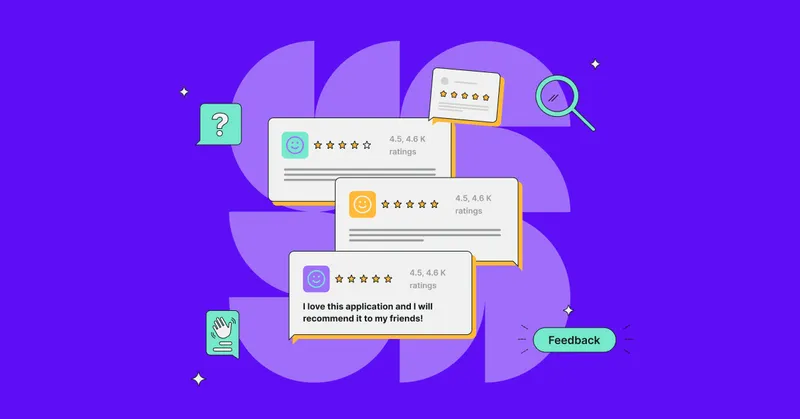
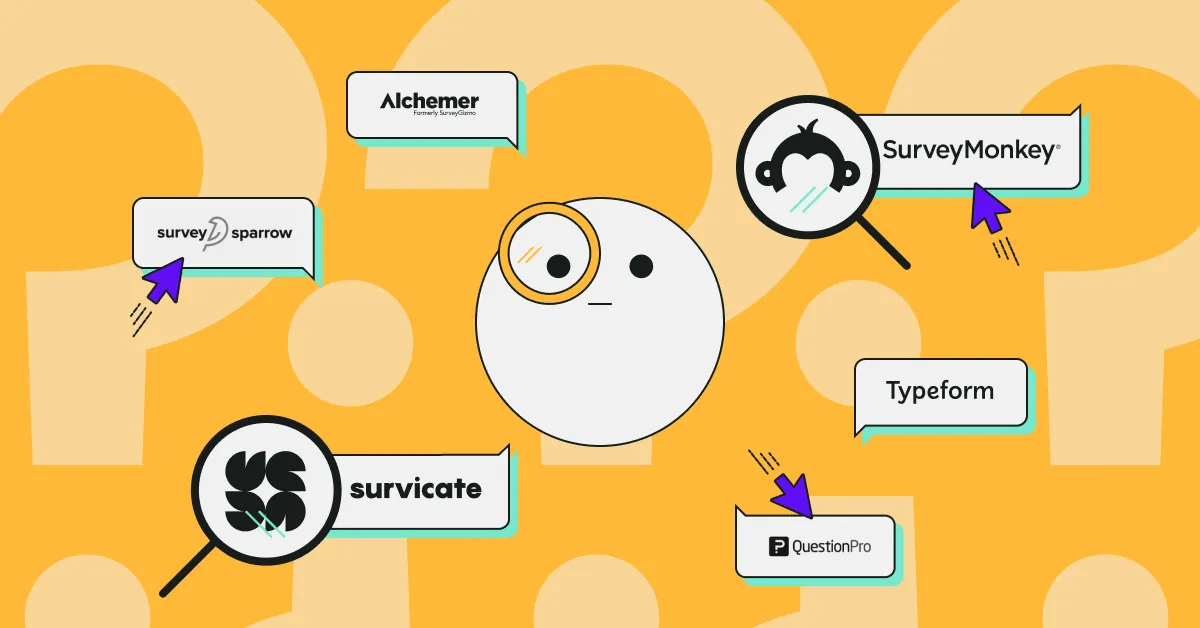

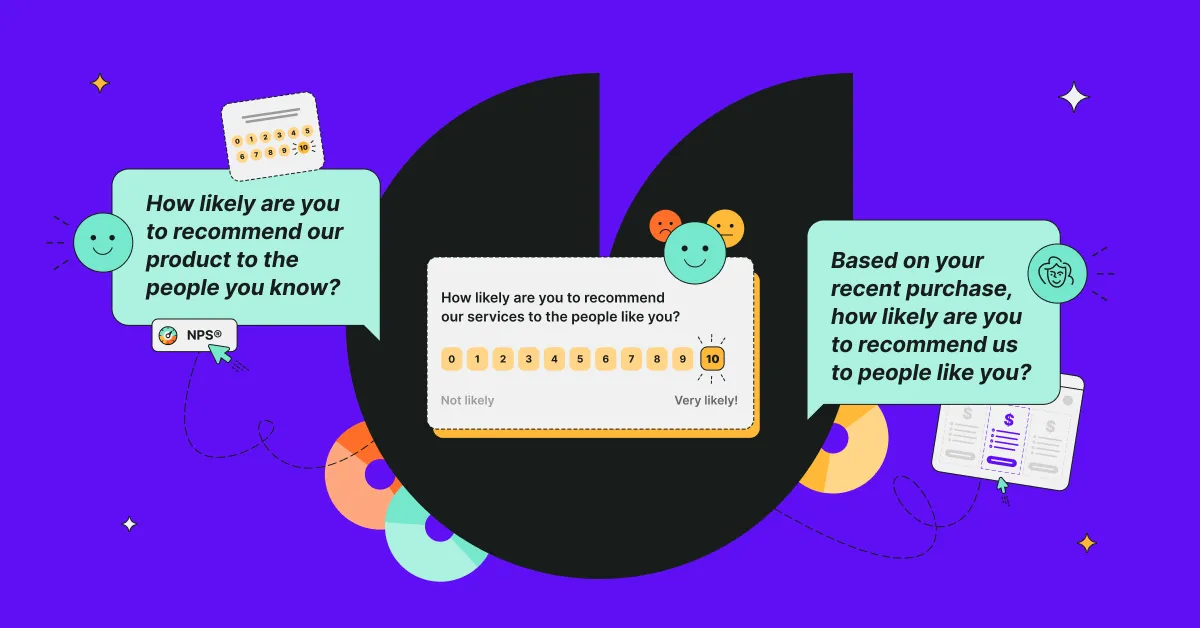
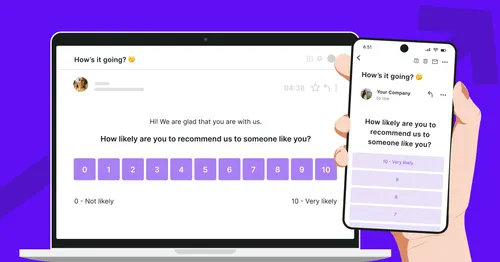
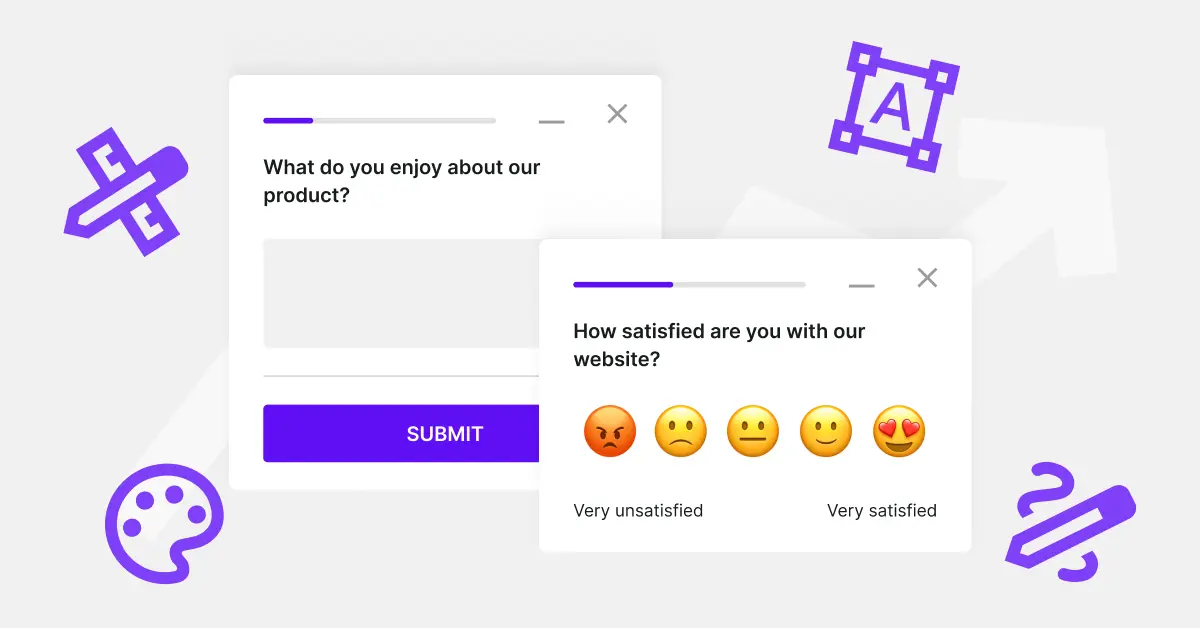
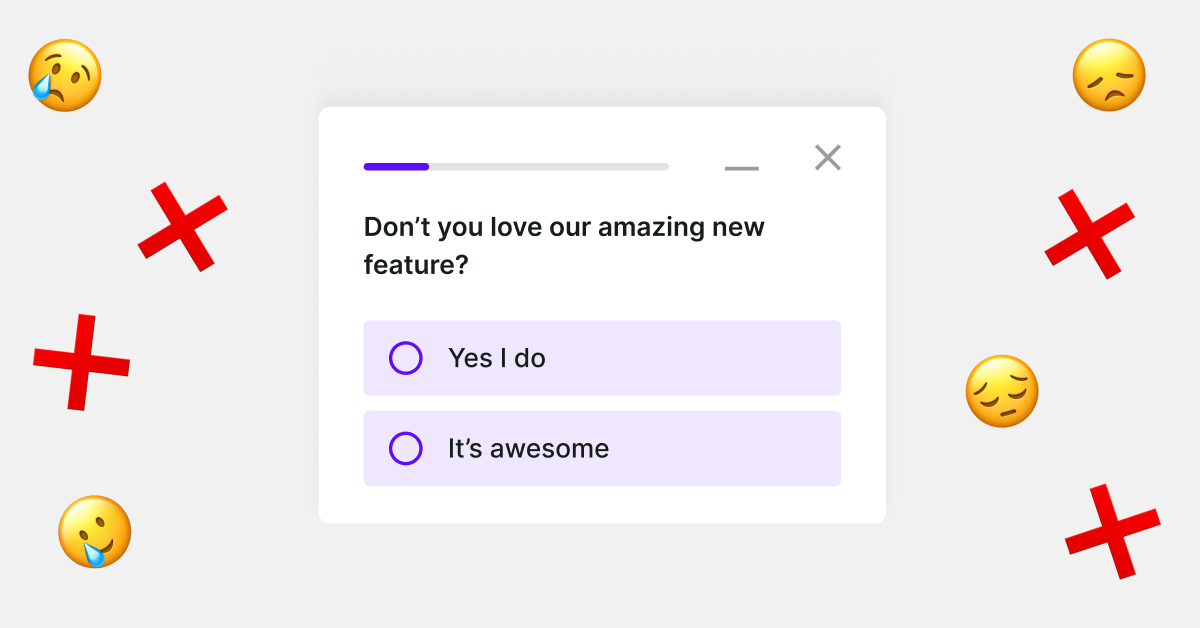
.svg)

.svg)



